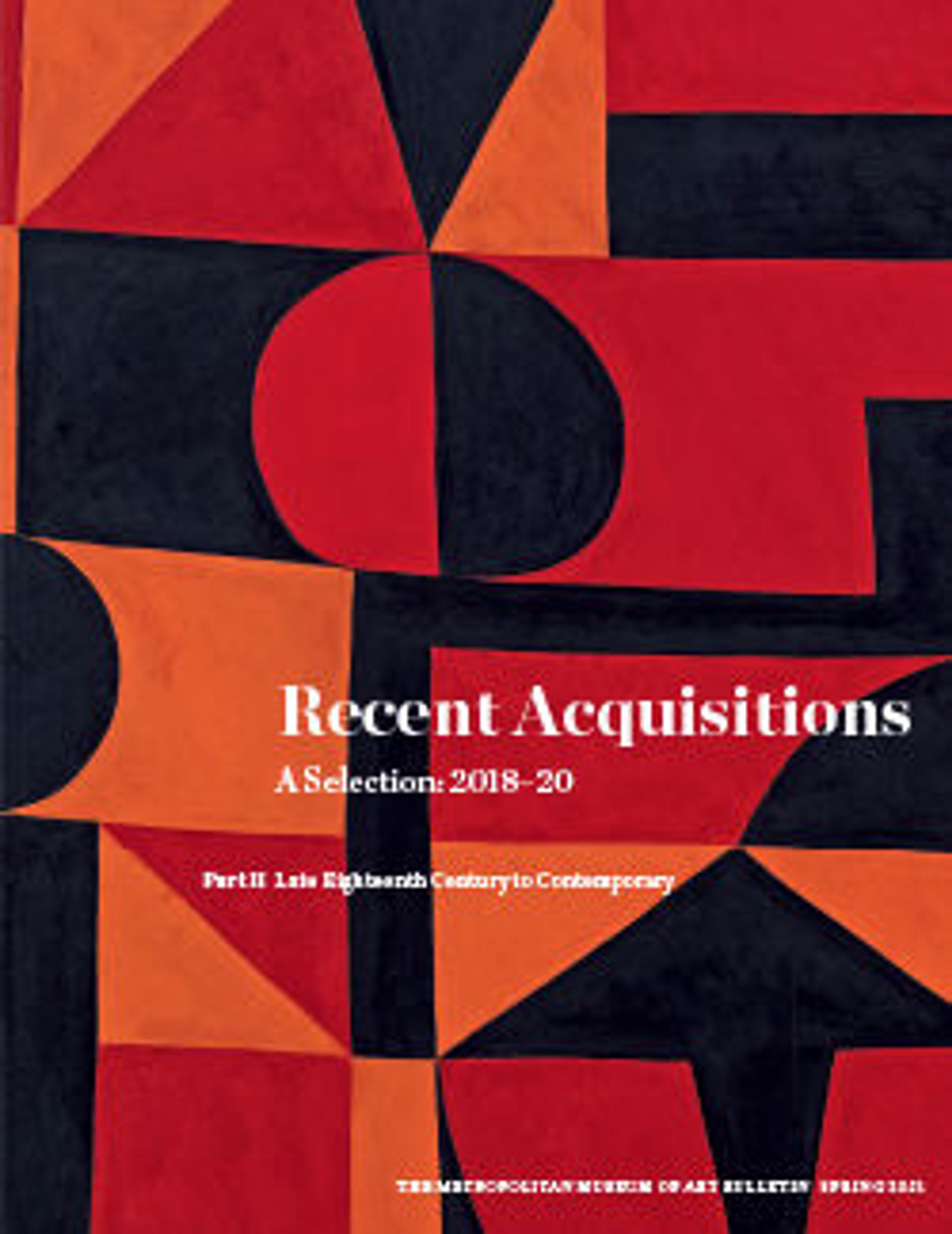Qur'an
This Qur’an comprises a compilation of loose folios that are held together within an embossed decorative leather wrap cover. This construction is characteristic of West African bookmaking traditions. The text is written in the barnavi script (particular script from Borno), common in Nigeria and Chad and distinguished by bold application, round letters and short lettershafts. Additional characteristics of this Qur’an are the decorative inserted tables that serve to divide chapters and sections. These are composed as geometric patterns with simple repeat motifs—circles, cross, double-T and others, which are rendered as colorful grids in red, brown and sparkling yellow. In addition to reflecting the artistic vibrancy of West Africa, these patterns bear talismanic and other meanings that surpass the devotional function of such manuscripts.
Artwork Details
- Title:Qur'an
- Date:19th century
- Geography:Attributed to Probably Northern Nigeria
- Medium:Ink and opaque watercolor on paper; embossed leather cover
- Dimensions:Qur'an: c
Folio:
H. 9 in. (22.9 cm)
W. 6 1/2 in. (16.5 cm) - Classification:Codices
- Credit Line:Purchase, Friends of Islamic Art Gifts, 2019
- Object Number:2019.176
- Curatorial Department: Islamic Art
More Artwork
Research Resources
The Met provides unparalleled resources for research and welcomes an international community of students and scholars. The Met's Open Access API is where creators and researchers can connect to the The Met collection. Open Access data and public domain images are available for unrestricted commercial and noncommercial use without permission or fee.
To request images under copyright and other restrictions, please use this Image Request form.
Feedback
We continue to research and examine historical and cultural context for objects in The Met collection. If you have comments or questions about this object record, please contact us using the form below. The Museum looks forward to receiving your comments.
